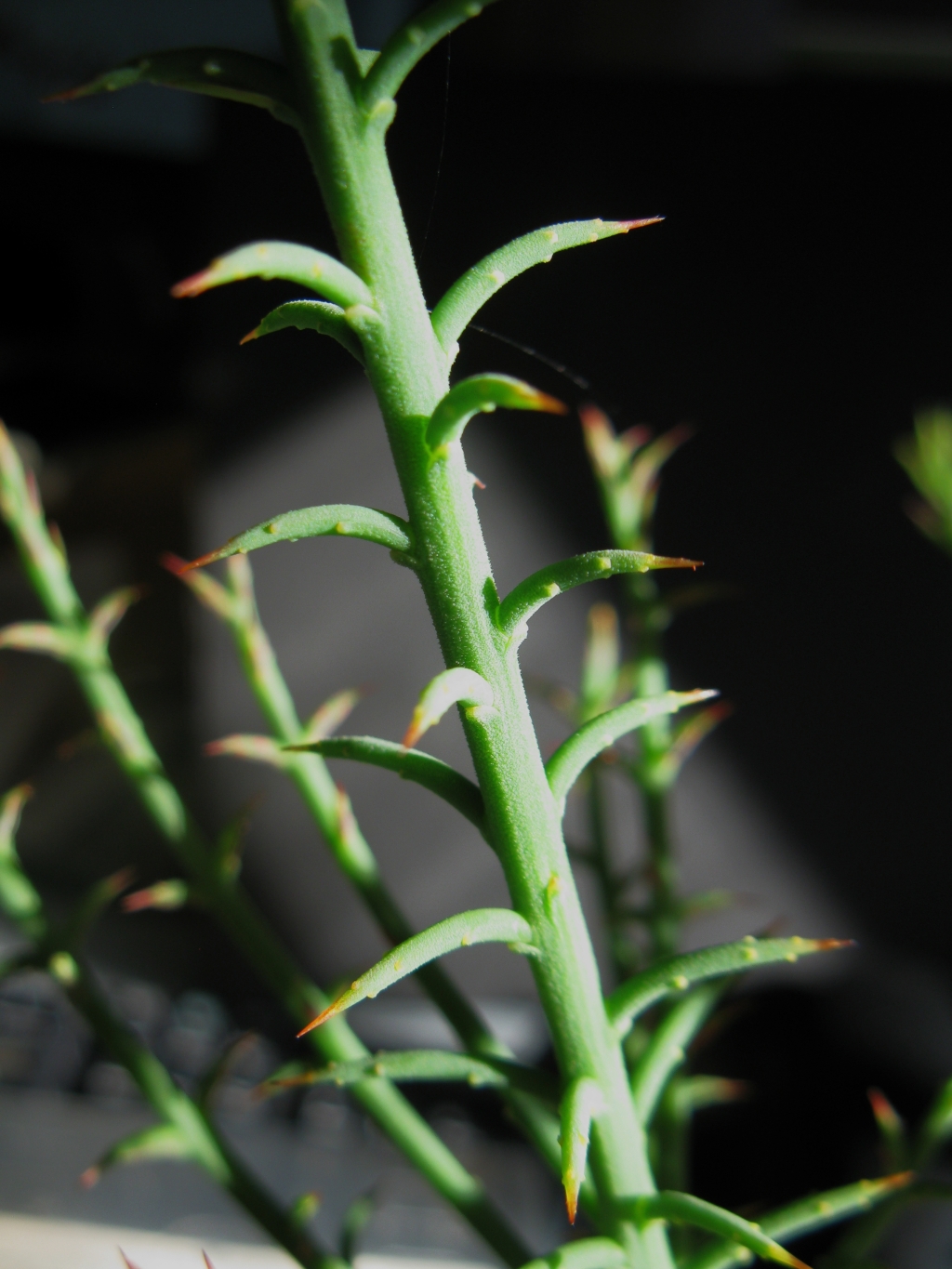Sphaerolobium acanthos
Crisp Grampians Globe-peaErect wiry shrub, to c. 1 m tall; stems terete, faintly ribbed, minutely scabrous; branchlets numerous, to c. 20 mm long, divaricate, recurved, often 3–5-forked at tips, spinescent. Leaves scattered or subwhorled, subulate, 2–3 mm long, caducous; stipules absent. Flowers 1 or 2, axillary; peduncle to c. 1.5 mm long, produced into a subulate tip between flowers; pedicels to c. 1.5 mm long; bracts and bracteoles obovate. Calyx campanulate, 3.5–4.5 mm long, lead-grey, more or less glabrous; teeth imbricate, unequal, longer than tube; upper lip cuneate; lower lobes subulate; petals yellow, orange or reddish-brown; standard transversely broad-elliptic, 7–7.5 mm long, yellow at centre; keel obliquely broad-obovate, about the same length as wings. Pod obovoid-ellipsoid, c. 4.5 mm long, c. 3.5 mm wide, oblique, turgid, pruinose; seeds 1–2, c. 1.5 mm long, mottled. Flowers Nov.–Jan.
GGr. Confined to the Grampians and rare, recorded only from the Halls Gap-Mt William area and the Victoria Valley. Found in sclerophyll forest, woodland and heathland, usually near streams.
This species has been confused with the Western Australia endemic S. daviesioides Turcz. which has smooth stems and branchlets, lateral branchlets undivided and concentrated near the stem apices, a glabrous stigma (tufted with hairs in S. acanthos) and an earlier flowering season (Crisp 1994).
Jeanes, J.A. (1996). Fabaceae. In: Walsh, N.G.; Entwisle, T.J., Flora of Victoria Vol. 3, Dicotyledons Winteraceae to Myrtaceae, pp. 663–829. Inkata Press, Melbourne.
 Spinning
Spinning